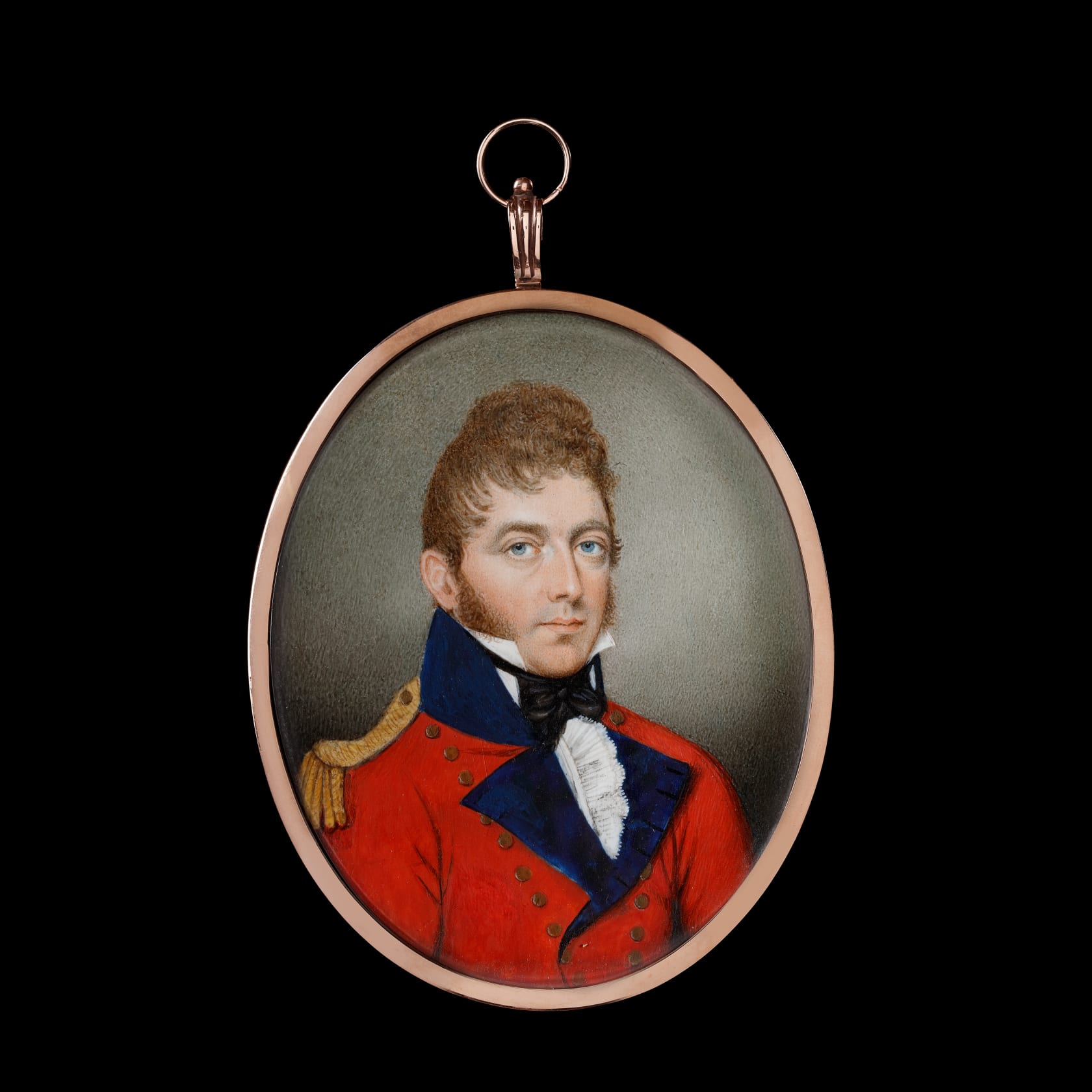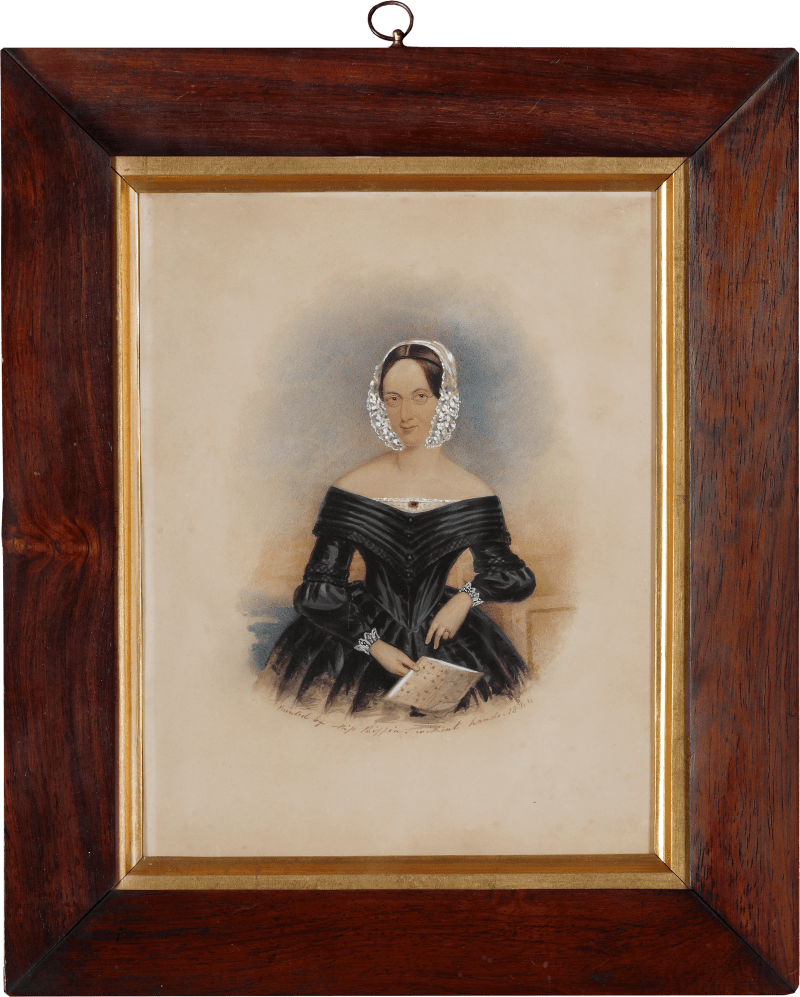Enquire
This miniature is one of the most detailed, carefully characterised, examples by Sarah Biffin and probably the closest work in technique to William Marshall Craig, R.A. (1765-1834), who had helped her to refine her skills over a decade earlier. The delicate movements required to create a miniature such as this, and the close proximity to the painting, would have been exhausting and time consuming. Painting with her mouth, the brush supported by her shoulder, Biffin usually painted in front of her clients. In 1808 she was observed painting by George Long (1802-1883), then five years old; ‘This lady’s ability was indeed unique, as she had neither arms nor legs…seemingly seated on a cushion…she painted miniature portraits, handed round for inspection, and she wrote her name…executed, as all else, by her mouth alone.’[1]
1824, the year in which this miniature was painted, was a significant year in Biffin’s life. Only three years prior to painting this portrait, Biffin had...
1824, the year in which this miniature was painted, was a significant year in Biffin’s life. Only three years prior to painting this portrait, Biffin had...
| This miniature is one of the most detailed, carefully characterised, examples by Sarah Biffin and probably the closest work in technique to William Marshall Craig, R.A. (1765-1834), who had helped her to refine her skills over a decade earlier. The delicate movements required to create a miniature such as this, and the close proximity to the painting, would have been exhausting and time consuming. Painting with her mouth, the brush supported by her shoulder, Biffin usually painted in front of her clients. In 1808 she was observed painting by George Long (1802-1883), then five years old; ‘This lady’s ability was indeed unique, as she had neither arms nor legs…seemingly seated on a cushion…she painted miniature portraits, handed round for inspection, and she wrote her name…executed, as all else, by her mouth alone.’[1] 1824, the year in which this miniature was painted, was a significant year in Biffin’s life. Only three years prior to painting this portrait, Biffin had joined a contingent, likely including the Earl of Morton, to travel to Europe. Biffin arrived in the late October of 1821. Fresh from her success at both the Royal Academy and the Society of Arts (where she was awarded the Large Silver Medal for a miniature). Now a popular destination, artists such as Turner were drawn to the city.[2] Here, Biffin met the Prince of Orange and was employed by him as court painter until her return to England a few months later. Over the next few years, Biffin’s reputation as an artist rose considerably. Still travelling around Britain, she began to give lessons to other (usually female) artists, alongside painting commissioned portraits such as the present work. In 1824, her personal life also appeared to flourish, with her acceptance of marriage from a William Stephen Wright, whom she may have known for some time.[3] In September the couple were married in Kilton Church, although their relationship seems to have been far from conventional, with the pair living apart. The present work must have been painted prior to Biffin’s marriage, as she signed ‘Mrs. Wright’ afterwards, until her move to Liverpool in 1841. [1] B. S. Long, ‘British Miniaturists’, London, 1929, p. 30. [2] Turner’s sketch of Brussels, with the Cathedral of Saint Michael and Saint Gudula, 1824 is in the collection at Tate Britain (D20071 Turner Bequest CCXVI 265 a). [3] Wright was described as ‘a gentleman formerly of the Navy, but who has been for some years in the habit of attending the celebrated Miss Biffen, the miniature painter’ (Kentish Weekly Post, 16 April 1824). |








